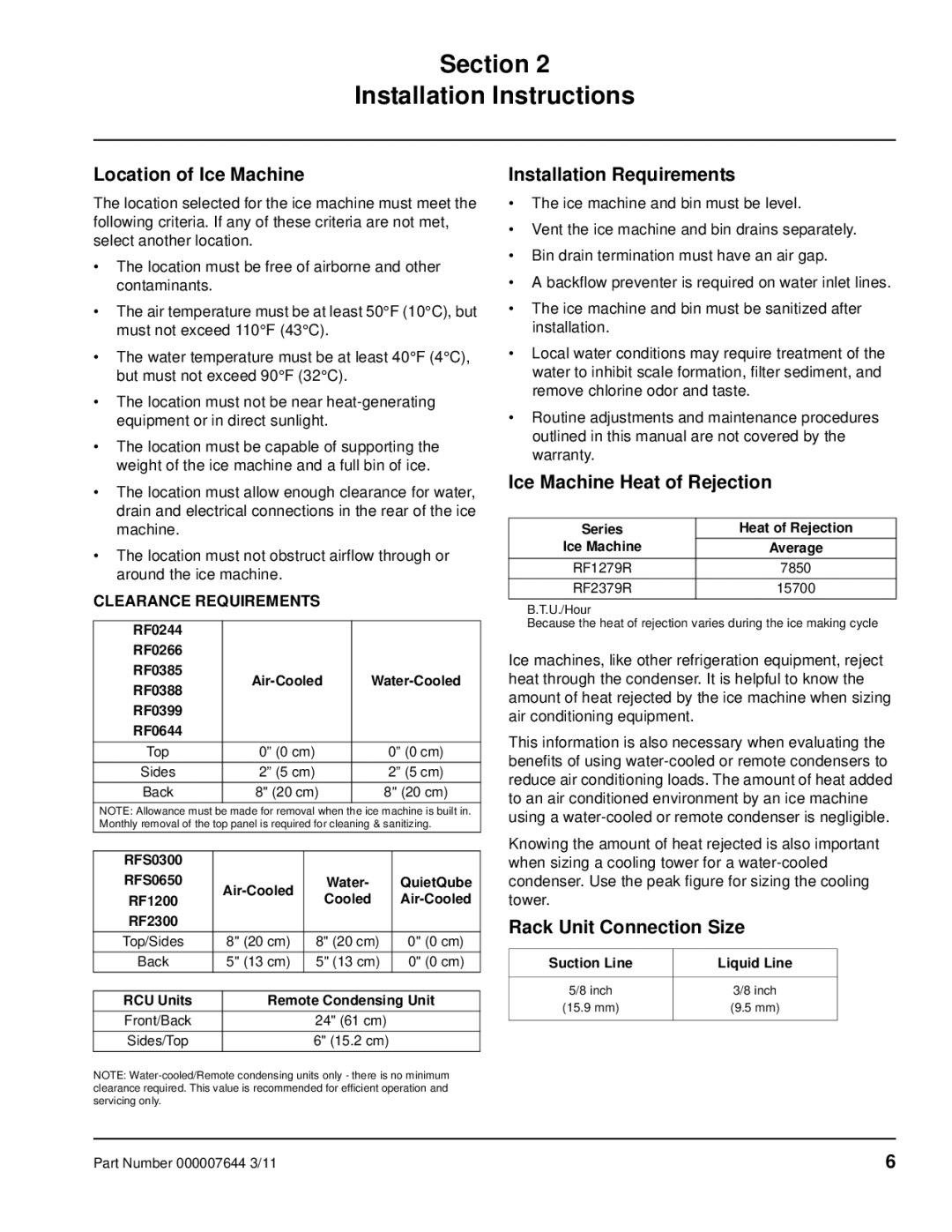RF specifications
Manitowoc Ice RF is a leading series in the ice-making industry, renowned for its innovative technologies and commitment to efficiency. Designed to meet the high demands of commercial food service operations, the RF model features a range of cutting-edge attributes that set it apart from competitors.One of the main features of Manitowoc Ice RF is its advanced refrigeration system. The machine employs an Adaptive Harvest Control technology that ensures consistent ice quality by continually monitoring the ice-making process and adjusting accordingly. This results in reliable production of clear, hard ice cubes without the usual inconsistencies found in other machines.
The Manitowoc Ice RF models are designed with energy efficiency in mind. They utilize high-efficiency compressors and optimized insulation methods, significantly reducing energy consumption compared to traditional ice machines. This not only contributes to cost savings for businesses but also aligns with environmentally conscious practices, helping to reduce the overall carbon footprint.
Another notable characteristic of the RF series is its streamlined design, which allows for easy installation and maintenance. The machines are compact, making them ideal for establishments with limited space. The removable panels and accessible components simplify routine cleaning and servicing, ensuring the unit operates at peak performance and extends its life cycle.
Food safety is another focus of the Manitowoc Ice RF series. The machines incorporate an internal, easy-to-clean design that minimizes the risk of contamination. The anti-microbial protection on key surfaces helps prevent the growth of harmful bacteria, ensuring that the ice produced is safe for consumption.
In addition to its robust construction and technology, Manitowoc Ice RF offers various production capacities, catering to different business needs. Whether in a bustling restaurant, a hotel, or a convenience store, there is a model that fits the required ice production volume.
Overall, the Manitowoc Ice RF series combines state-of-the-art technology, energy efficiency, and ease of use to provide an exceptional ice-making solution for commercial establishments. Its commitment to quality and innovation makes it a preferred choice for businesses aiming to enhance their food service operations while maintaining high standards of safety and efficiency.

